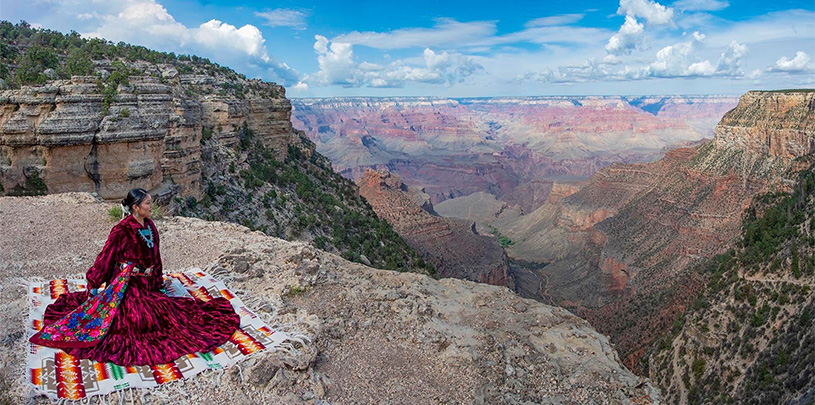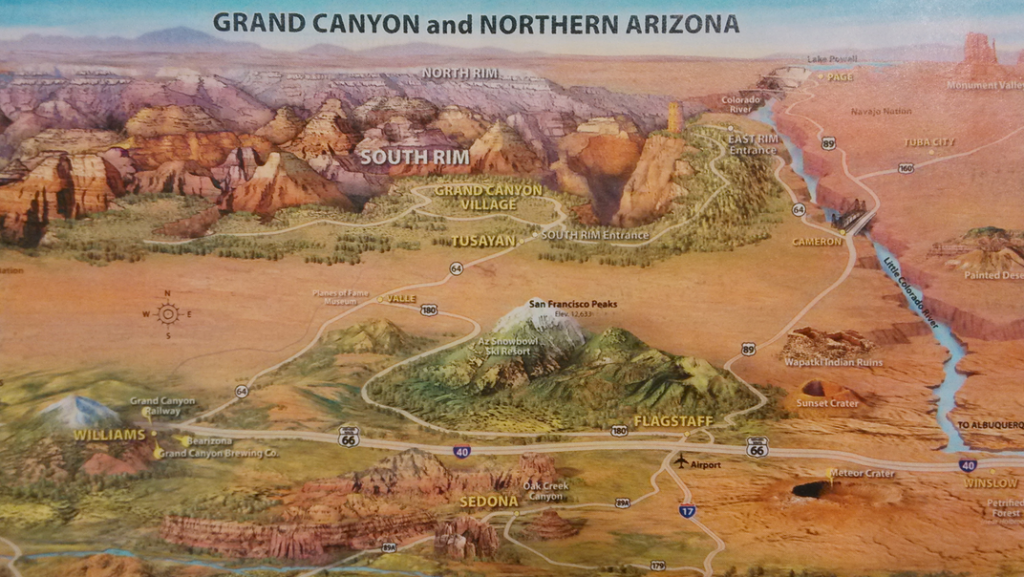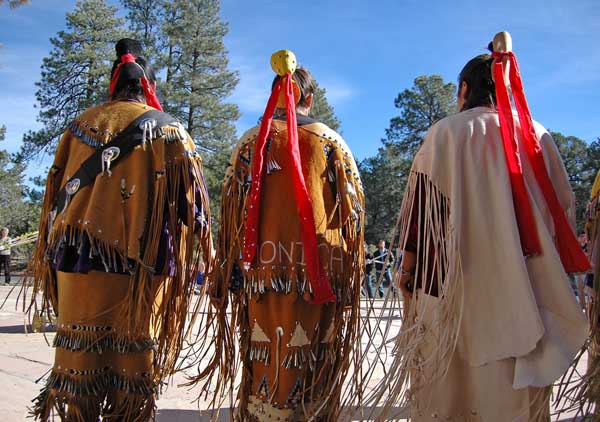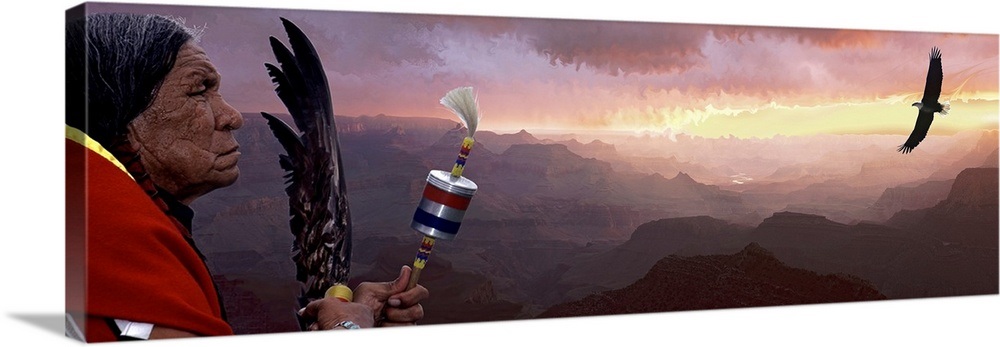
The Grand Canyon’s Ancient Atlas: Navigating a Landscape Mapped by Spirit and Story
Forget the laminated fold-outs and GPS coordinates. When you gaze into the yawning chasm of the Grand Canyon, you’re looking at a landscape far older and infinitely more complex than any modern map can convey. For the Indigenous peoples who have called this sacred space home for millennia, the Canyon isn’t just a geological wonder; it is a living, breathing atlas, inscribed not with lines and labels, but with stories, songs, ceremonies, and an intimate, ancestral knowledge that transcends mere navigation. This isn’t a review of a physical map, but a profound invitation to experience the Grand Canyon through the lens of its original cartographers – a journey that will forever change how you perceive place, history, and belonging.
Redefining "Map": Beyond Paper and Projections
Our Western understanding of a "map" is typically a static, two-dimensional representation of a three-dimensional space, designed for practical navigation from point A to point B. Native American maps of the Grand Canyon, however, operate on entirely different principles. They are dynamic, experiential, and deeply embedded in cultural memory and spiritual belief.

Imagine a map that tells you not just where a water source is, but when it’s accessible, who is responsible for its upkeep, what sacred stories are tied to its flow, and how to approach it respectfully. This is the essence of Indigenous cartography. These "maps" are woven into oral traditions – epic narratives, seasonal songs, ceremonial cycles – that guide people through the labyrinthine depths and across the vast plateaus. Landmarks are not just geological features; they are characters in a living history, sites of creation, places of encounter with deities, and markers of ancestral journeys.
For tribes like the Havasupai, Hualapai, Hopi, Navajo, Paiute, and Zuni, the Grand Canyon, or "Ongtupqa" as the Hopi call it, is not a tourist destination but their ancestral homeland, the very center of their universe. Their "maps" are a distillation of thousands of years of observation, survival, and spiritual connection. They pinpoint not just physical routes but also resource availability, safe havens, dangerous passages, ceremonial sites, and the invisible spiritual pathways that connect the terrestrial world to the cosmos.
The Grand Canyon Through Indigenous Eyes: A Multilayered Atlas
To understand these maps is to understand the Grand Canyon as a living entity. Every rock formation, every bend in the Colorado River, every hidden spring, and every plant has a name, a story, and a purpose.

Consider the Havasupai, whose name means "people of the blue-green waters." Their traditional lands lie deep within a side canyon, where the vibrant turquoise falls cascade into travertine pools. Their "maps" are an intricate knowledge of water sources – the lifeblood of the desert. They know precisely where the springs emerge, how their flow changes with the seasons, and the delicate ecological balance required to sustain them. Their stories are a guide to not just physical survival but spiritual well-being, connecting their existence directly to the purity of the water and the health of the canyon. To walk into Supai Village is to step into a landscape where every element is understood, respected, and utilized according to an ancient, living map.
The Hualapai (meaning "people of the tall pines") occupy a vast stretch of the western Grand Canyon, including the dramatic Skywalk at Grand Canyon West. Their traditional "maps" encompass not only the canyon floor and its river, but also the high plateaus where they hunted and gathered. Their knowledge includes the best routes for descending into the canyon, the locations of medicinal plants, and the seasonal movements of game. Their narratives link specific mesas and side canyons to the journeys of their ancestors and culture heroes, providing a rich, mnemonic framework for navigating their extensive territory.
For the Hopi, whose mesas sit just east of the Canyon, Ongtupqa is a place of profound spiritual significance, a sacred portal through which their ancestors emerged into this world. Their "maps" are pilgrimage routes, ceremonial circuits, and a deep understanding of the Canyon’s role in their cosmology. Specific shrines and sites within the Canyon are visited for rituals, connecting the living to their ancestors and ensuring the balance of the world. Their knowledge of the Canyon is less about daily travel and more about understanding its profound spiritual power and its place in the larger cosmic order.
The Diné (Navajo), whose reservation borders the eastern Grand Canyon, also possess a rich cartography. Their "maps" are often embedded in their complex Blessingway and Enemyway ceremonies, which recount the creation of their world and the journeys of their Holy People. Specific landmarks in and around the Canyon are associated with these narratives, reinforcing their identity and connection to the land. For the Diné, the landscape is imbued with spiritual power, and understanding its "map" means understanding its sacredness and the proper way to live within it.

Navigating the Invisible Paths: Practical Implications for the Traveler
As a modern traveler, how can one access or experience these "maps"? It’s not about finding a parchment scroll, but about shifting your perspective and engaging with the Canyon in a more profound way.
-
Seek Out Indigenous Voices and Experiences: The most direct way to encounter these maps is through the people who hold them. Consider visiting Havasupai tribal lands (though permits are extremely difficult to obtain and must be planned years in advance), or taking a Hualapai River Runners white-water rafting trip. These experiences offer a chance to interact with Indigenous guides and hear their stories firsthand, to see the Canyon through their eyes, and to understand the living connection they have to the land.
-
Visit Cultural Centers and Interpretive Sites: The Desert View Watchtower on the South Rim features murals by Hopi artist Fred Kabotie and often has Indigenous cultural demonstrators who share traditional knowledge. The Grand Canyon National Park itself is increasingly incorporating Indigenous perspectives into its interpretive programs and signage. Look for opportunities to learn about the traditional place names and the stories associated with specific viewpoints.
-
Engage with Native American Guides: Some tour operators or independent guides with direct tribal affiliations offer unique interpretive hikes or tours that focus on Indigenous history, ecology, and spirituality. These guides can point out subtle markers, share traditional narratives, and help you understand the deeper meaning of the landscape.
-
Practice Mindful Observation and Deep Listening: Even without a specific guide, you can begin to "read" the landscape more deeply. Instead of just seeing a pretty view, ask yourself: What is the story of this rock layer? Where would water collect here? What plants are growing, and what might they be used for? How would a person survive here without modern conveniences? Imagine the millennia of human presence, the footsteps, the ceremonies, the daily life that unfolded in these very places.
-
Learn about Place Names: Many English place names in and around the Canyon have Indigenous origins or are direct translations. Researching these names can unlock layers of meaning and history, revealing the insights of those who first named them.

The Profound Impact: Beyond Tourism
Experiencing the Grand Canyon through the lens of Native American maps is not just another item to check off a travel list; it is a transformative encounter. It fosters a profound sense of humility, reminding us that we are fleeting visitors in a place that has sustained cultures for thousands of years. It cultivates a deeper respect for the land, not as a commodity or a backdrop for selfies, but as a sacred entity with its own history, spirit, and rights.
This perspective challenges our Western notions of time, ownership, and progress. It forces us to confront the ongoing legacy of colonialism and the resilience of Indigenous cultures that continue to thrive despite immense challenges. By understanding these "maps," we gain not just geographical knowledge, but a moral compass for how we engage with the natural world and its original custodians.
Planning Your Journey into Indigenous Grand Canyon
When planning your visit, prioritize ethical tourism. Support Native American-owned businesses, artists, and cultural initiatives. If visiting tribal lands, always adhere strictly to their rules and regulations, which are designed to protect their culture, land, and privacy. Understand that access to certain sacred sites may be restricted, and respect those boundaries without question.
Your journey into the Grand Canyon will be immeasurably richer if you approach it not just with a camera and hiking boots, but with an open heart and a mind ready to learn. Let the whispers of millennia guide you. Allow the stories of the Havasupai, Hualapai, Hopi, Navajo, and Paiute to unfold within you. Realize that the most accurate and profound map of the Grand Canyon isn’t something you can buy at a gift shop; it’s an invisible, living tapestry of knowledge, woven into the very fabric of the land and held in the hearts of its original peoples.
This deeper engagement transforms the Grand Canyon from a mere geological spectacle into a vibrant, storied landscape – a truly living atlas waiting to be read by those willing to listen. It’s a review not of a place you merely see, but of a world you experience, profoundly and forever changed.
